Yosemite National Park is a photographer’s dream, with some of the most jaw-dropping natural beauty in the world. Its landscapes are virtually unmatched, from towering granite peaks and cascading waterfalls, to high alpine lakes and meadows awash with summer wildflowers. This guide highlights the best photo spots in Yosemite to capture it all, as well as tips to get the perfect shot.
Whether you’re a seasoned nature photographer or simply want to capture memorable vacation photos on your phone, you’re guaranteed to leave with dazzling photos – and a newfound awe of nature’s majesty.
Note: Yosemite requires reservations for entry at various points during the year, including February Firefall and summer peak season. Always check the current reservation requirements for the dates you plan to visit.
Jump to:
- Tunnel View
- Valley View
- Glacier Point
- Glacier Point Road
- Taft Point
- El Capitan Meadow
- Sentinel Bridge
- Mirror Lake
- Sentinel and Cook’s Meadow
- Mariposa Grove
Tunnel View
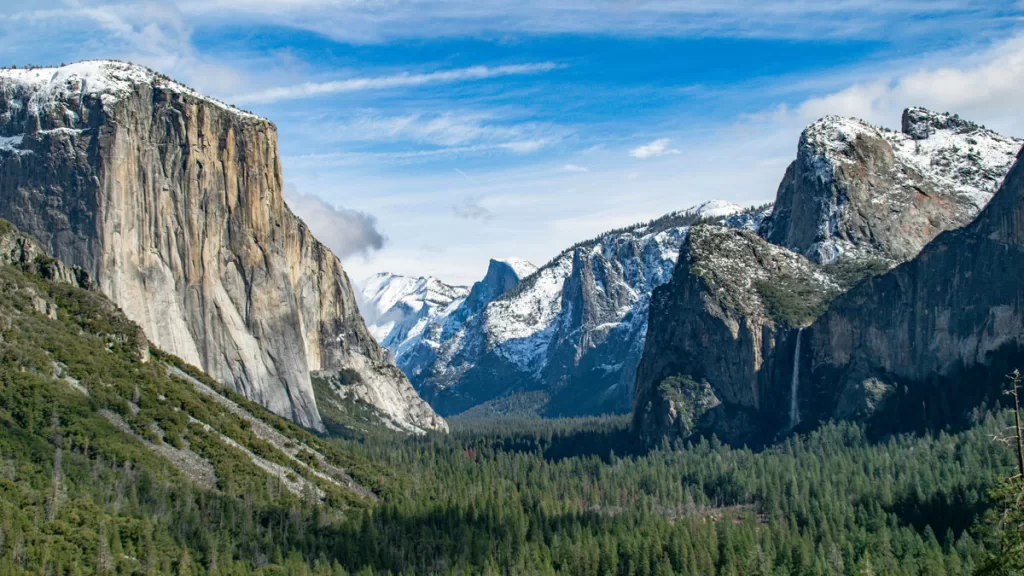
Arguably one of the best photo spots in Yosemite, Tunnel View allows you to capture the park’s most famous peaks and waterfalls – all in one frame.
The overlook looks out over the expanse of Yosemite Valley, flanked by El Capitan on the left, Bridalveil Fall on the right, and Half Dome in the distance.
Note: Tunnel View is a popular vantage point, and the convenient parking lot almost makes it too accessible. Plan to navigate crowds, especially in peak travel months.
Best Time to Shoot
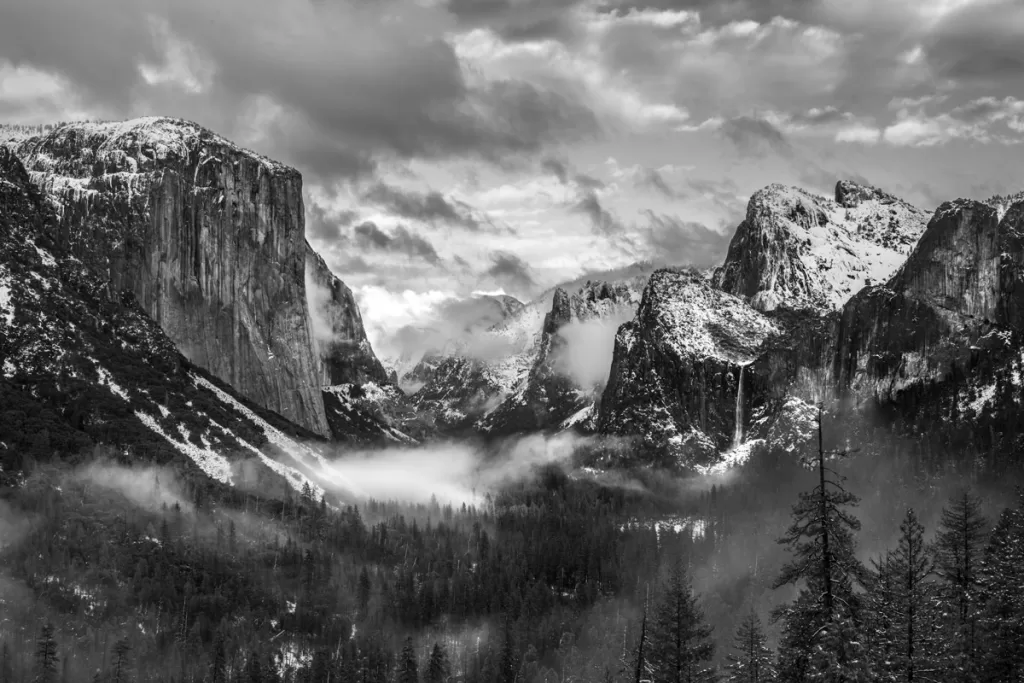
Depending on the type of photo you’re after, there are multiple perspectives to enhance your Tunnel View photos.
Best Time of Year: Waterfalls peak in late spring (April – June), when the snowmelt from higher elevations turns the falls into roaring cascades of whitewater. If you want to maximize the visibility of Bridalveil Fall in your photos, this is the time to do it.
Best Hour of the Day: Year-round, the best hour is sunrise or sunset, which illuminates El Capitan and bathes the Valley in an added glow.
Added Mood: after a storm, lingering mist will often settle over the valley below for heightened moodiness. It adds extra drama to photos, particularly black and whites.
Valley View
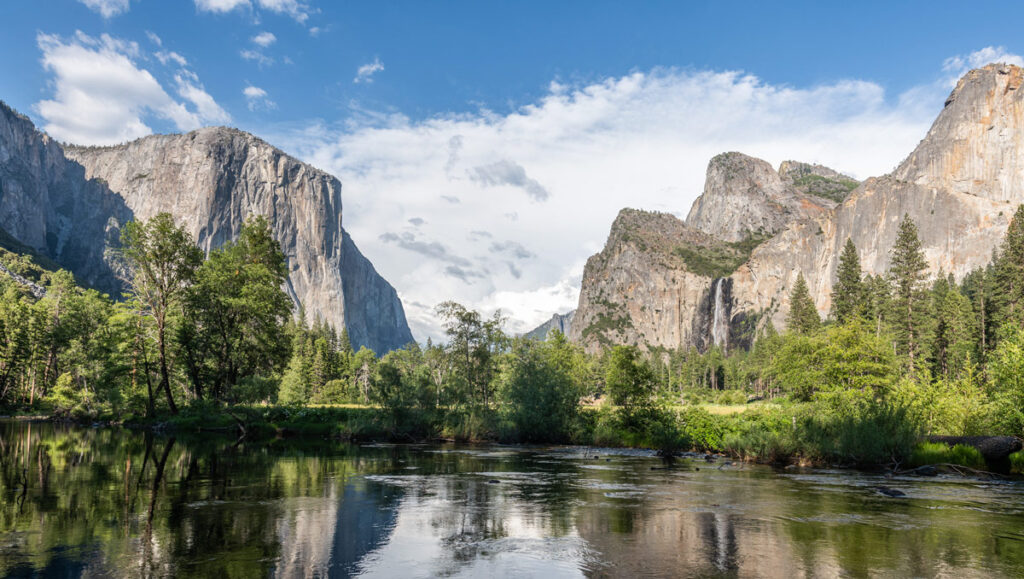
Tucked away along Yosemite Valley’s Northside Drive, many visitors whiz past on their way to other destinations – unaware that they’re missing one of Yosemite’s most picturesque viewpoints.
Valley View sits on the banks of the Merced River, with a low-angle perspective of El Capitan and Cathedral Rocks. On calm days, the granite peaks are reflected in the waters of the river below, for photos of the utmost serenity.
Best Time to Shoot
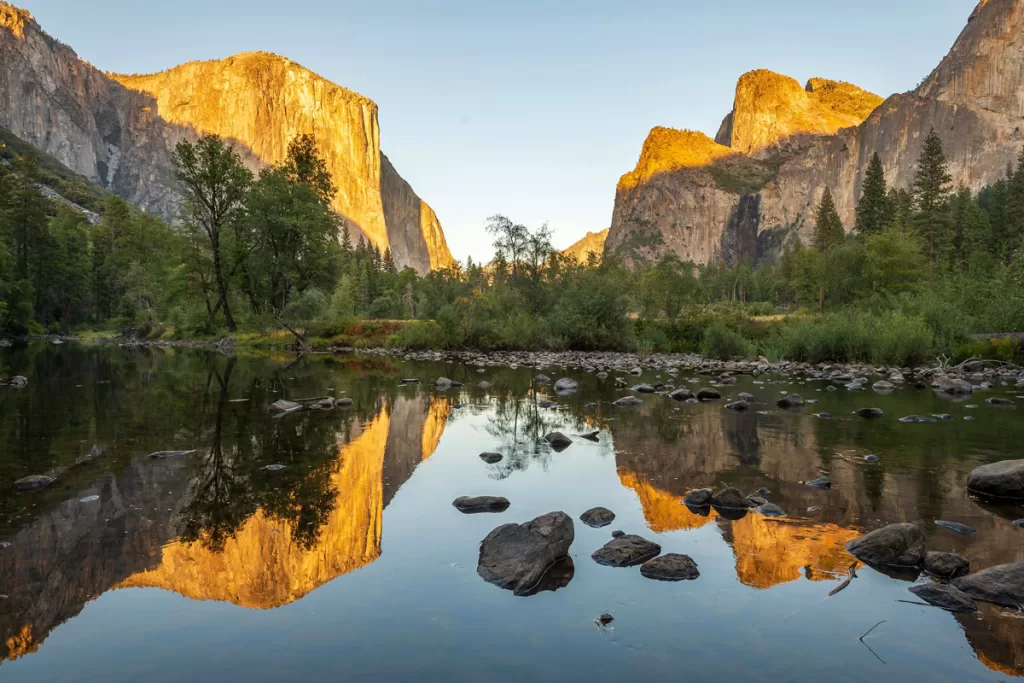
Anytime the waters of the Merced River are calm, in order to maximize the reflections of El Capitan and Cathedral Rocks.
Best Time of Day: early morning or evening
Best Time of Year: summer or fall, when the river current slows to a placid stream. In fall, you’ll also get the added beauty of autumnal color reflections.
(Yosemite Valley fall colors typically peak in October. During the season, check CaliforniaFallColor.com for weekly reports.)
Glacier Point

For sweeping vistas of the high Sierra, it doesn’t get much better than Glacier Point, which sits at 3,000 feet above the Valley below. It’s one of the best photo spots in Yosemite, with Half Dome appearing so close you can reach out and touch it.
Even though Half Dome dominates the shot, you’ll also capture a multitude of high mountain peaks, stretching endlessly to the horizon. Vernal Falls, one of the park’s most famous waterfalls, is also visible to the right of Half Dome.
Best Time to Shoot
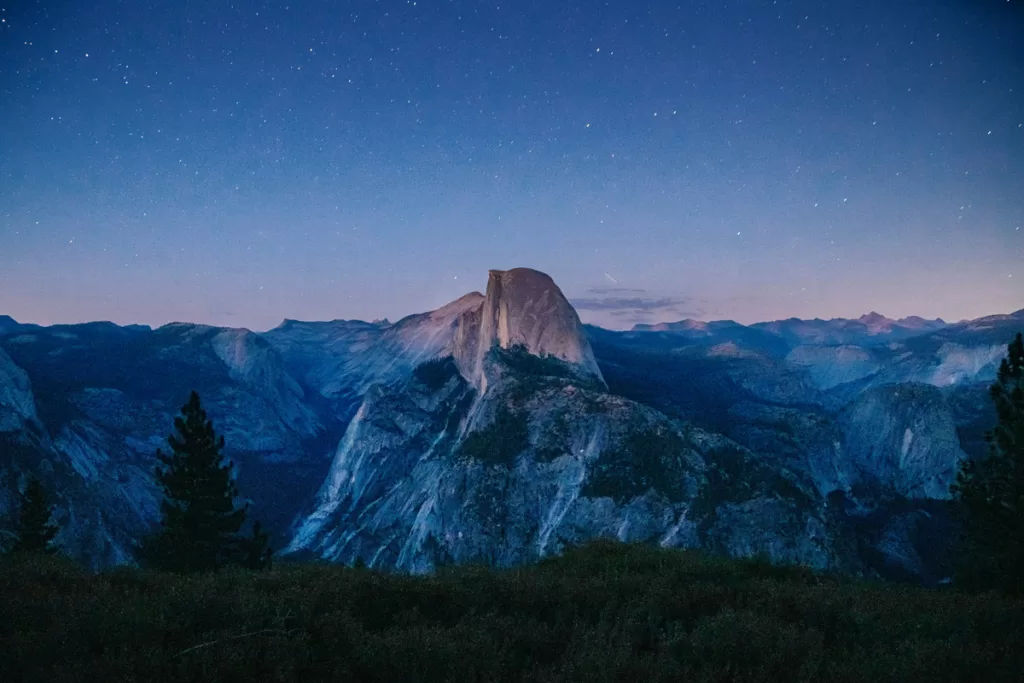
Golden hour adds an ethereal alpenglow to Half Dome’s iconic face.
We’ve never (personally) done nighttime photos here, but it’s also a popular spot for astrophotography, thanks to the minimal light pollution.
Note: the road to Glacier Point closes during the winter months. Always check current conditions ahead of your visit.
Glacier Point Road

In addition to Glacier Point proper, there is a bend in the road just before the viewpoint’s parking lot.
The two-lane road curves sharply, perfectly positioned in front of the looming granite face of Half Dome beyond. It imbues a fun tease of adventure and the open road in your photos, as Half Dome tantalizes and beckons.
Best Time to Shoot
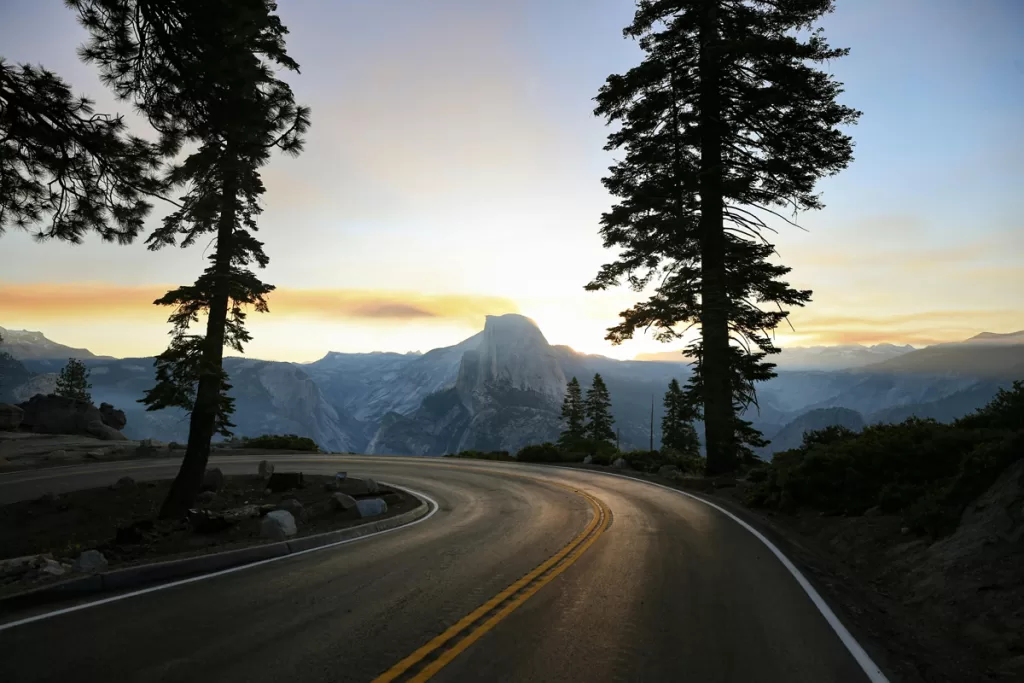
Personally, we like the high contrast of daylight hours, with the shadow of the foreground’s forest canopy starkly juxtaposed against the brightness of Half Dome on a sunny day.
(Also the best time to shoot? Any time there’s not traffic or other cars. Always be smart and courteous of other drivers – don’t block the roads, slow down, or do anything else that would otherwise endanger or impede others while taking your photo).
Taft Point
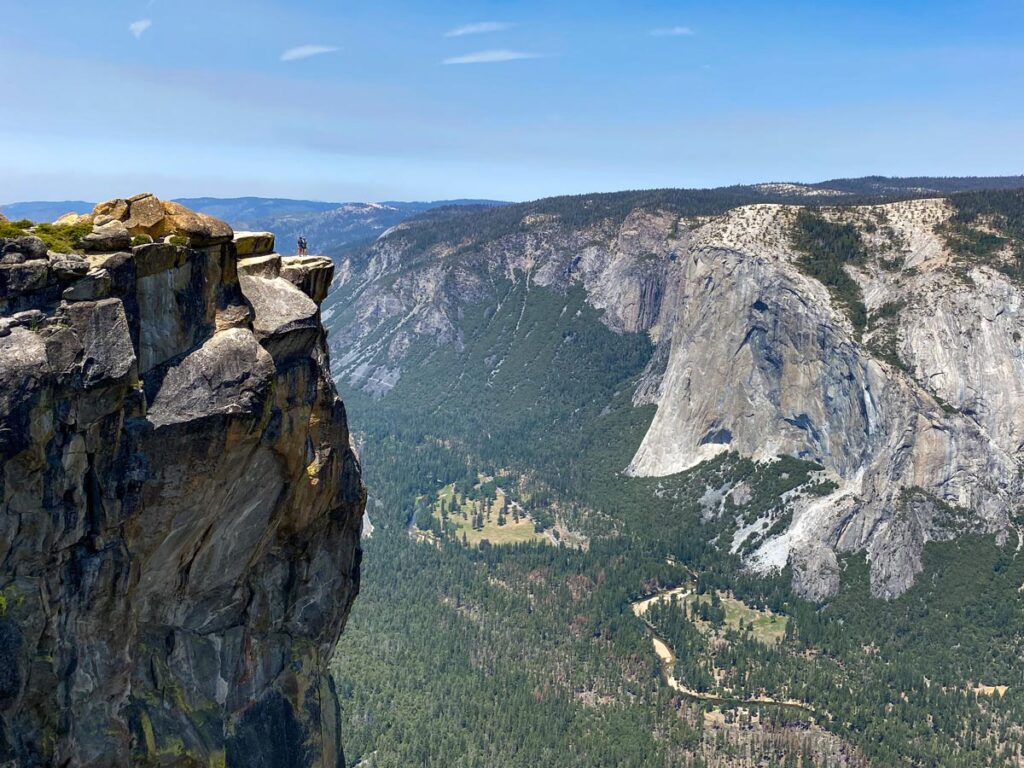
For sheer drama, make the trek to Taft Point, where the cliff edge drops 3,500 feet to Yosemite Valley below. The resulting photographs are enough to make your palms sweat, but create a sensational image.
To better enhance the perspective, capture a photo with an individual standing at the point. Any human being appears miniscule in relation to the sheer magnitude of the surrounding vista.
Best Time to Shoot
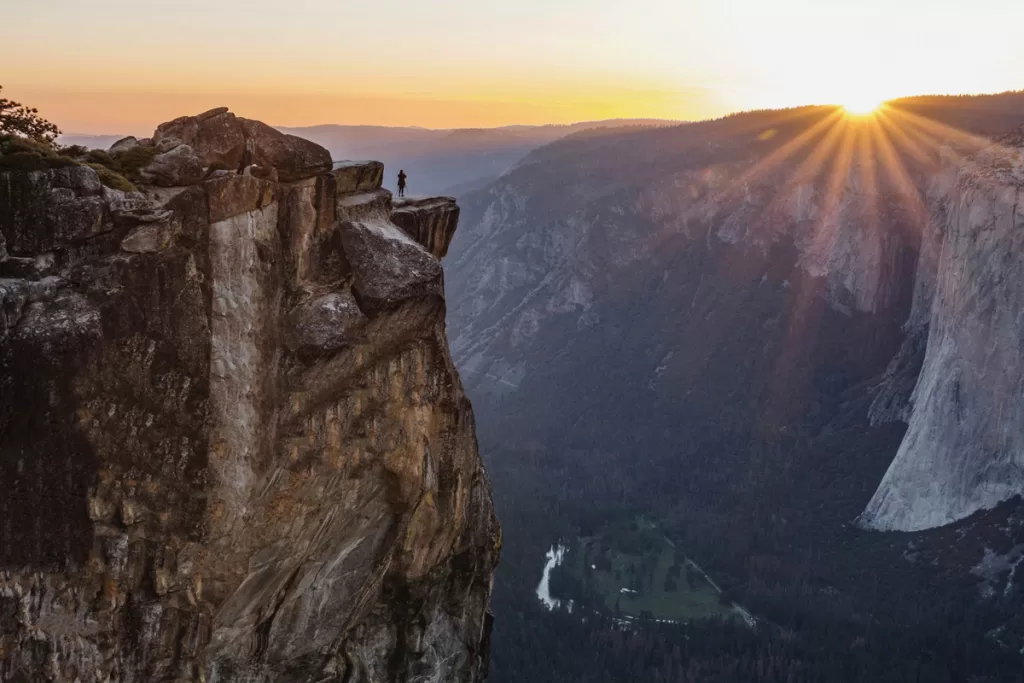
Go on a clear day, to ensure crisp images of the landscape around and below the point. The scale is lessened when it’s shrouded in fog or clouds.
Note: It’s a moderate, 2.2 mile roundtrip hike from the road to the Taft Point overlook. It's not overly strenuous, but plan accordingly, especially if you’re lugging camera equipment.
Directions. Located along Glacier Point Road, Taft Point access also closes during the winter months. Always check current conditions ahead of your visit.
El Capitan Meadow
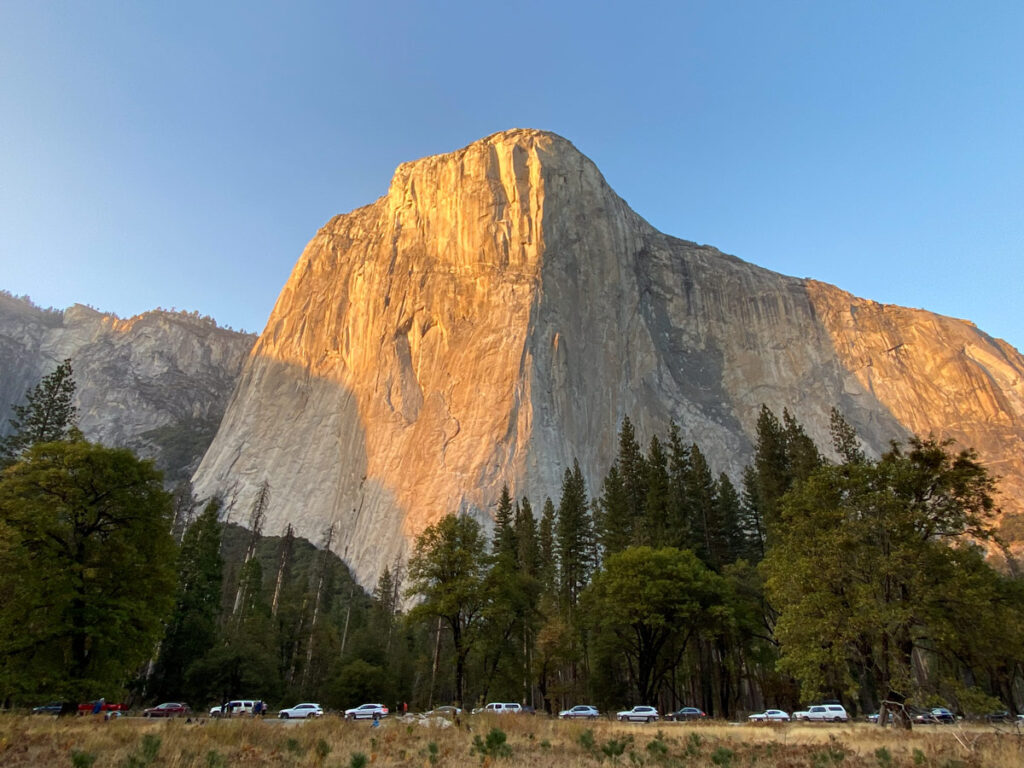
To capture the sheer scale of El Capitan, you’ll want to set up in the meadow just across Northside Drive from the legendary climbing spot.
At any given time during the climbing season, the face of “El Cap” is dotted with climbers. They’re nearly invisible to the naked eye, but if you have a telephoto lens (200mm+), you can snap some incredible shots of the climbers in action (and even overnighting along the wall).
Best Time to Shoot

Evening alpenglow bathes El Capitan in a sublime rosy light that creates a lovely photo any time of year. Those who enjoy night photography can easily linger past dusk, and capture the stars that begin to twinkle beyond the massive granite face.
If you’re aiming for evening photos, allow yourself plenty of time to set up in the meadow, at least 1 hour before sunset.
Sentinel Bridge
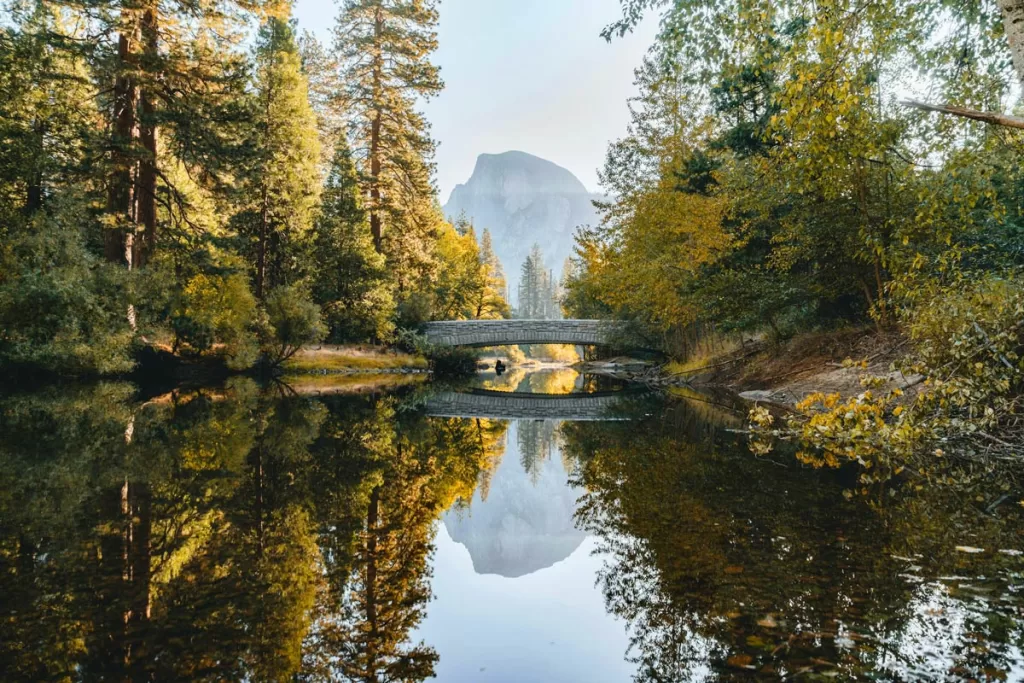
Sentinel Bridge is heralded for its reflection imagery, with Half Dome clearly mirrored onto the smooth waters of the Merced River below.
Best Time to Shoot
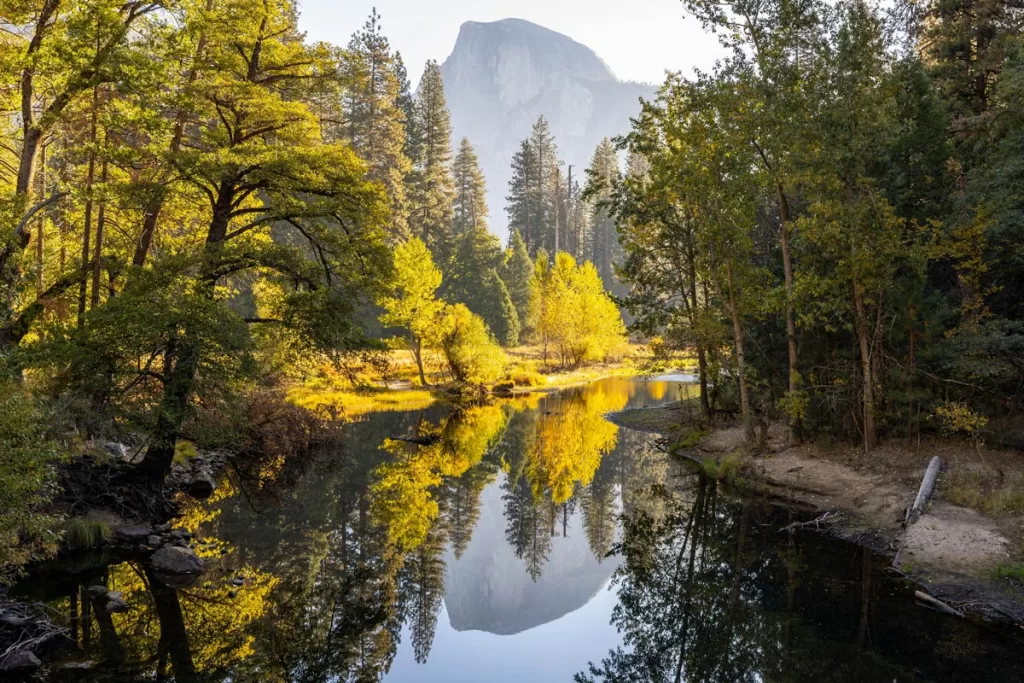
Any time the waters are calm, to ensure a crisp reflection.
Any given day, either early morning or evening are your best chances of capturing a placid river. Seasonally, summer, fall, or even winter are best, as late spring (April – June) sees powerful currents resulting from winter snowmelt.
Mirror Lake

This serene little lake, tucked up against the belly of Half Dome, feels worlds away from the bustle of Yosemite Valley during tourist season.
Another photo spot famed for its watery impressions, it offers a unique reflection of Half Dome on the lake’s (aptly named) mirrored surface.
Mirror Lake is only accessible by foot, and requires a 4.4-mile roundtrip hike. However, the trail has minimal elevation (300 feet total). Once you reach the lake, be sure to explore the shoreline and test different angles for your photos.
Best Time to Shoot
Directions. (Mirror Lake is only accessible by foot. You can either park at Curry Village, or take the free Yosemite Valley shuttle and get off at stop #17).
Sentinel and Cook’s Meadow
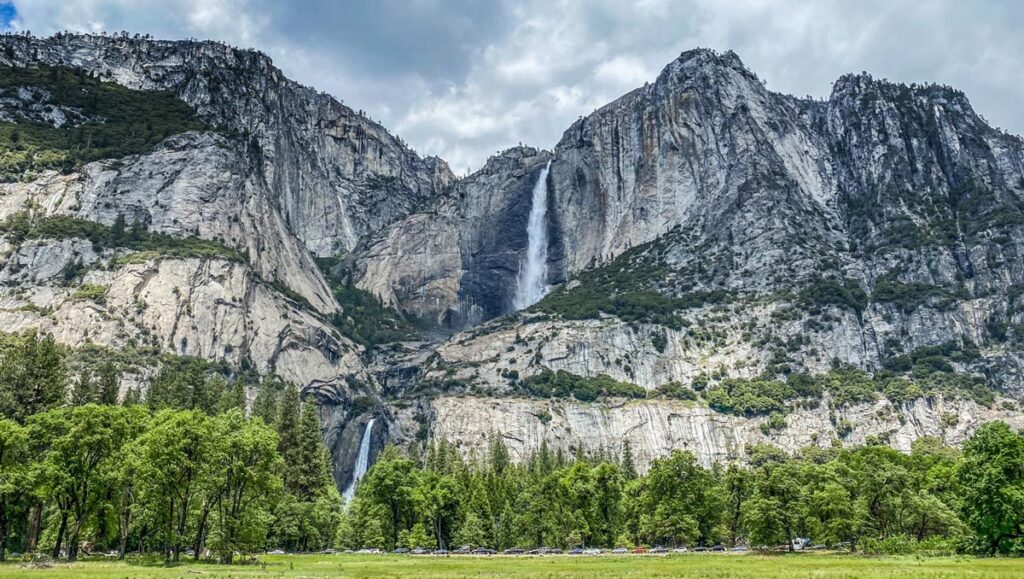
Sentinel and Cook’s Meadow are the vast grasslands that blanket the floor of Yosemite Valley, providing unobstructed views of Yosemite Falls, Half Dome, El Capitan, and more.
A raised wooden boardwalk winds for 2 miles through the heart of the meadows, allowing multiple opportunities to stop and photograph the splendor of Yosemite Valley (please just be responsible, and remain on the designated trail!)
Best Time to Shoot
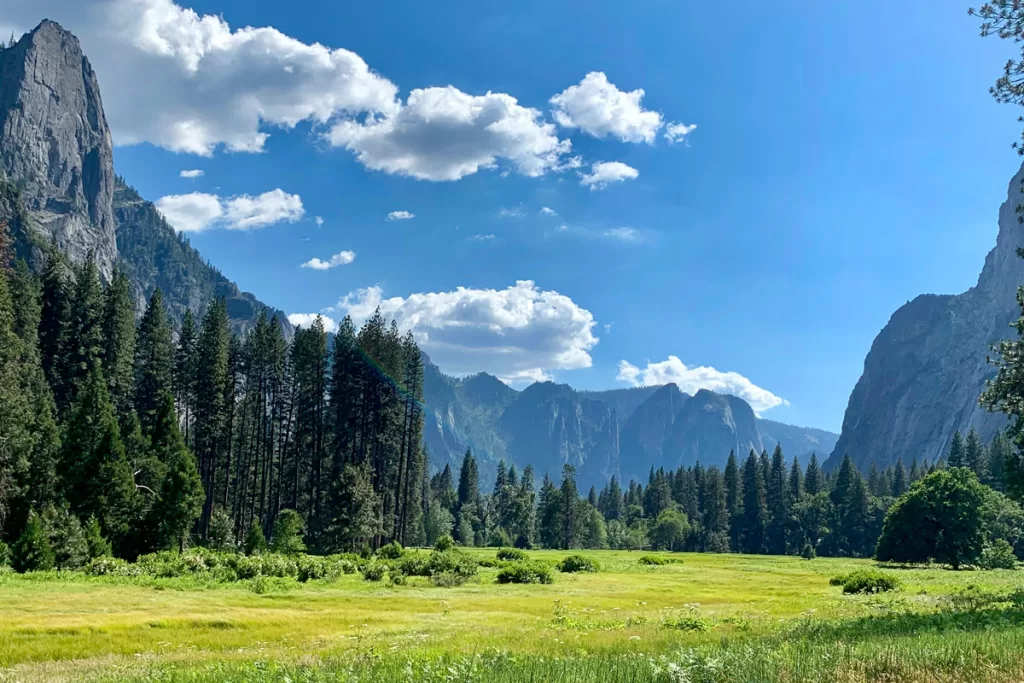
We love late spring to early summer in Cook’s Meadow. This gentle melding of seasons includes both roaring waterfalls (April – June) and bright wildflowers (June – July), creating vivid photos awash in color and the vibrancy of the ecosystem.
Mariposa Grove
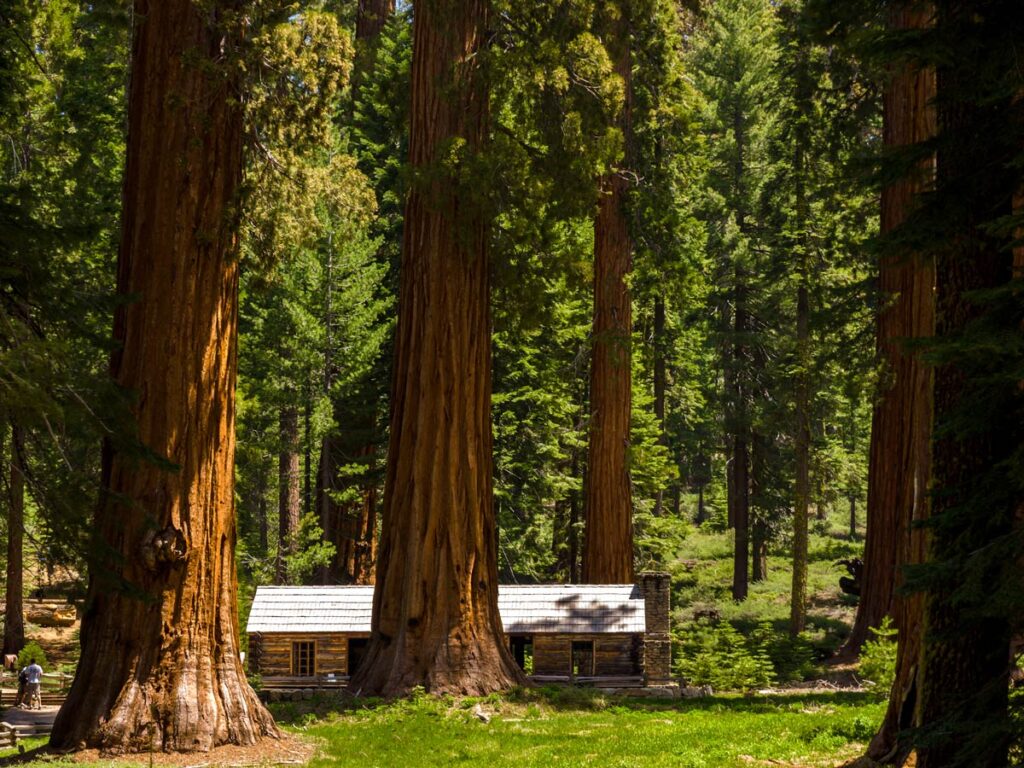
Located near the park’s southern entrance, Mariposa Grove is home to Yosemite’s largest concentration of sequoias.
These ancient behemoths, among the largest trees in the world, instill an otherworldly beauty to photos, with soft light filtering through their enormous branches. You can practically feel the mystic timelessness of the forest, jumping out of the images.
Best Time to Shoot
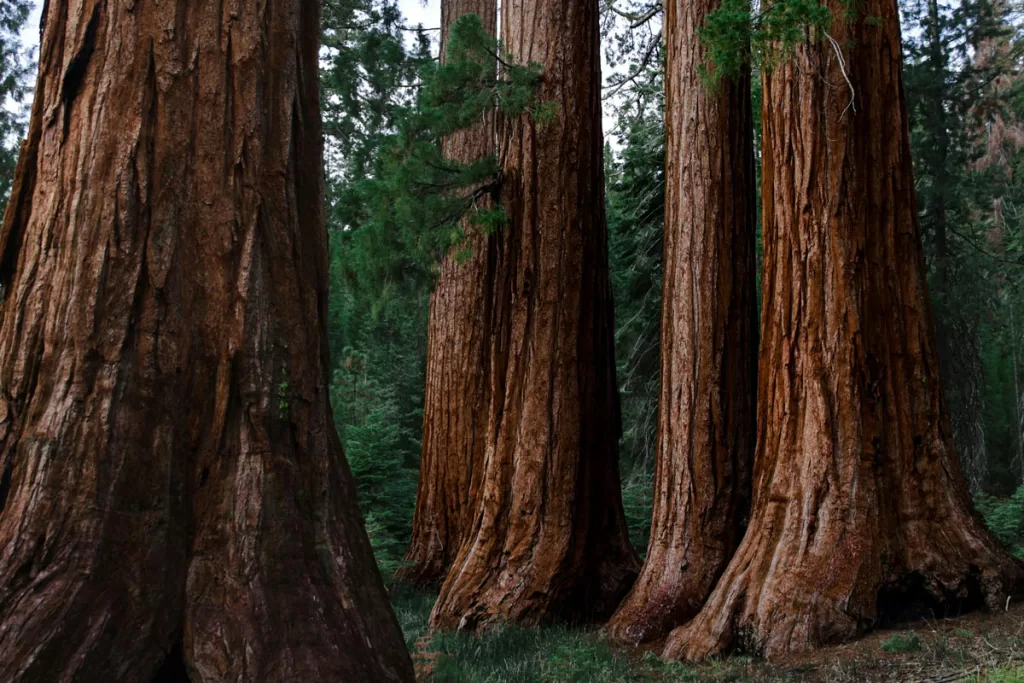
The sequoias’ size creates a rich forest canopy that keeps the lighting soft at all hours of the day. However, we still prefer the early morning hours (before 10 a.m.) for a little added glow.
Directions (once you park at the welcome plaza, you’ll need to take the free shuttle to the grove).
Note: the road to Mariposa Grove closes during the winter months, although you can still hike in on foot (for 4 miles roundtrip). Always check current conditions ahead of your visit.
Have more time to explore Yosemite? Check out our guides to the best time of year to visit Yosemite, the best easy and moderate hikes, and more.
